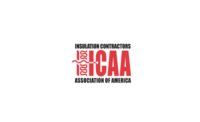The Brookings Institution’s Rebecca Mann and Jenny Schuetz contend that the threat of climate change in the U.S. must be met by improving home weatherization programs and making them more accessible. They cite the Infrastructure Investment and Jobs Act and the Inflation Reduction Act as allocating new funding to lower energy use in existing homes and diverting them to cleaner sources of power. “As these programs go into effect, policymakers can benefit from looking at the successes and limitations of existing weatherization policies, especially the Department of Energy’s Weatherization Assistance Program,” the authors wrote.
WAP covers activities including adding insulation, replacing heating and/or cooling systems, air sealing, replacing doors and windows, and other repairs. “Households living in weatherized homes save, on average, $223 to $283 a year; or, for every dollar invested in weatherization, $0.90 to $1.40 is gained in energy benefits,” Mann and Schuetz noted.
However, WAP fares poorly in terms of subsidies reaching the intended beneficiaries, with few people applying and even fewer completing the weatherization process. “Federal and state policymakers should focus on keeping application processes simple and transparent—combined with marketing and outreach—to implement the programs at scale,” the authors recommended. “Additionally, to weatherize millions of older homes quickly, the U.S. needs more trained workers and an increased supply of essential parts, such as electric heat pumps.”
Read Mann and Schuetz’s full article here.




Report Abusive Comment